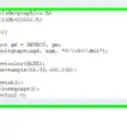wikiHow is a “wiki,” similar to Wikipedia, which means that many of our articles are co-written by multiple authors. To create this article, volunteer authors worked to edit and improve it over time.
This article has been viewed 42,798 times.
Learn more...
C++ is a very in depth language and can be used for very complex operations, but as with learning any new skill, it is necessary to first learn the fundamentals. This aim of this tutorial is to teach novice programmers how to write simple cin and cout statements. Cin statements are used to receive input from the user of the program, while cout statements output information to the user. These are two very important elements of code in the C++ language. To complete this tutorial, you will need a C++ compiler program, such as Microsoft Visual Studio, or Xcode if you are using a Mac.
Steps
Setting Up the Main Function
-
1Include preprocessor directives. These are the first lines of code in the program and are preceded by a hash sign. They are needed for the program to properly compile. In this case the only preprocessor directive needed is iostream, formatted as shown below. Notice that there is no semicolon used at the end of this statement.
-
2Use standard namespace. In addition to preprocessor directives, the first lines of the code must also define the namespace being used. The standard namespace, formatted as shown below, is sufficient for this code. Note that this line ends with a semicolon.
As a side note, the "using namespace std" line is known as an using directive. Using directives are considered bad practice, as uses of them increases the chances of naming collisions. If you don't want to use using directives, simply prefix every standard library feature with "std::". For example, cout -> std::cout and cin -> std::cin. This works for nested namespaces too, so ios::out would be std::ios::out, numeric_limits<streamsize>::max() would be std::numeric_limits<std::streamsize>::max().
-
1Define the main function. To create the main function, type “int main()” as shown below. The parentheses are for setting the parameters of the function, but here no parameters are needed and thus the parentheses are empty. There is no semicolon after the function definition.
-
2Make curly braces immediately following the function. On the next line, make a set of curly braces as shown in the graphic. Everything included within these curly brackets is part of the main function. The code up to this point should look something like the picture below.
Writing Cout Statements
-
1Know the syntax. Cout is used with the insertion operator, which is written as << (two “less than” signs). The actual output then follows, written within quotation marks. The line must end with a semicolon.
-
2Write the cout statement. Within the main function, type the cout statement using the proper syntax. For example: cout << “type text here”; (or std::cout << "type text here";, if you don't like the use of using directives)
-
3Become familiar with other uses of cout. Cout can also be used to output the values of variables, as long the variable has already been defined. Simply write the name of the variable after the insertion operator as shown below.
Error: cout<<"x"; wouldn't print 5, it would print 'x' (as a char) The same goes for cout<<"y"; Also, cout doesn't implicitly add newlines, meaning the above example would print "xy", and if we fixed the bug to print the value of x and the value of y, it would print "523". The solution is to use a newline symbol. A newline symbol is written as \n. Example: std::cout << x << "\n"; would print the value of x, then a newline character, meaning if we print the value of y (using the example above, it would print "5", then "23" on a new line.
-
1Use multiple insertion operators in a single statement. Insertion operators can be simply chained together, one after the other as shown in the figure.
(Note, for advanced readers, ignore this otherwise: The reason why you can chain calls to cout is within the insertion operator (operator<<) itself. The insertion operator returns *this, which, in this context, is the first parameter (cout), meaning *this returns cout. Successive calls are then parsed as cout << ..., which works.)
Writing Cin Statements
-
1Know the syntax. Cin is used with the extraction operator, which is written as >> (two “greater than” signs). The operator is then followed by a variable where the inputted data is stored. The line must end with a semicolon.
-
2Write the cin statement. First declare a variable. Then write a cin statement to define a value for the variable as shown. When the program runs, the input that user enters will be assigned to the variable. Note that the cin statement does not output any text onto the monitor.
-
3Combine cin and cout statements. Cin and cout statements can and should be used together. For instance, a cout statement may be used to prompt the user to assign a value to a variable, which is then assigned through a cin statement as shown in the figure.
Community Q&A
-
QuestionI want to ask whether it is possible to enter inputs in a program besides through the keyboard?
 Master CheetahCommunity AnswerNo, it isn't possible, unless you have some kind of hack that can autofill the input.
Master CheetahCommunity AnswerNo, it isn't possible, unless you have some kind of hack that can autofill the input. -
QuestionIt doesn't std::cout.
 James HeltonCommunity Answer1. Make sure you have done "using namespace std" near the top of the file. 2. Make sure you are using it as "std::cout >" (that is for std::cin). 3. If that doesn't work, you can always not use the "std::" part. I only recommend that for dire situations though.
James HeltonCommunity Answer1. Make sure you have done "using namespace std" near the top of the file. 2. Make sure you are using it as "std::cout >" (that is for std::cin). 3. If that doesn't work, you can always not use the "std::" part. I only recommend that for dire situations though. -
QuestionWhat is meant by input to your program?
 Simeon WatsonCommunity AnswerAnything the user gives. For example (in python): my_input_variable = input("Write input here: ") will make the user write something after "write input here: " when the program runs. Then what the user writes, also called the input, will be saved in my_input_variable.
Simeon WatsonCommunity AnswerAnything the user gives. For example (in python): my_input_variable = input("Write input here: ") will make the user write something after "write input here: " when the program runs. Then what the user writes, also called the input, will be saved in my_input_variable.
Warnings
- Note that the green text following the two forward slashes is referred to as a comment. These are simply notes for your own reference, but are not actually a part of the code. This text of the comment is not outputted on the monitor.⧼thumbs_response⧽
- Ensure preprocessor directives and namespace are defined. The code will not properly compile unless the preprocessor directive iostream has been included and the standard namespace is being used. See steps 1-2 in part I for more information.⧼thumbs_response⧽
- Check for missing semicolons. All cin and cout lines must end with a semicolon. However, the preprocessor directive and function definition statements should not end with a semicolon. The compiler should issue an error identifying the location of missing or unneeded semicolons.⧼thumbs_response⧽
- Verify proper syntax. Make sure that all parts of the code strictly follow the syntax laid out in the examples. A single character missing or misplaced can cause the compiler to output an error message.⧼thumbs_response⧽
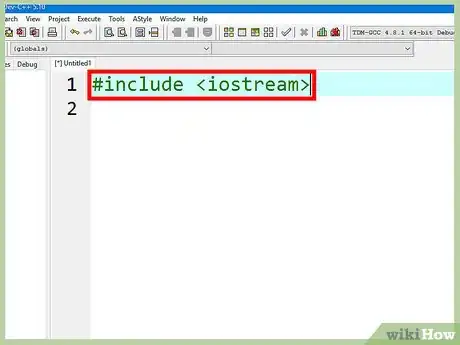
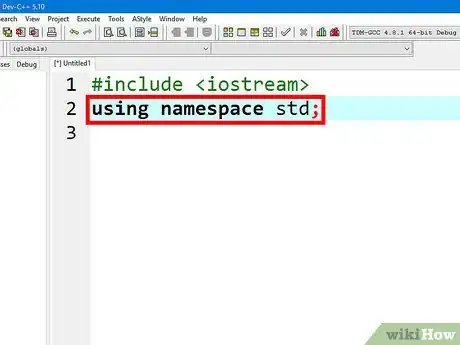
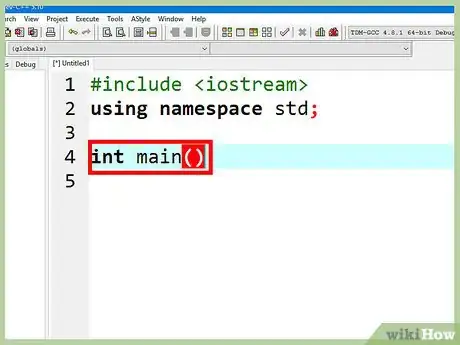
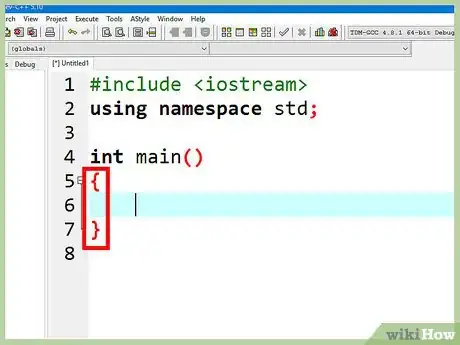
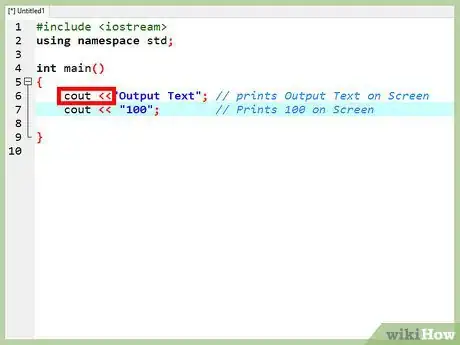

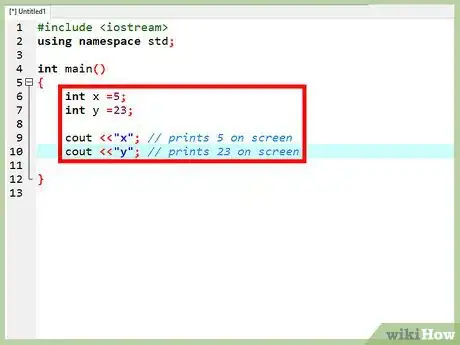
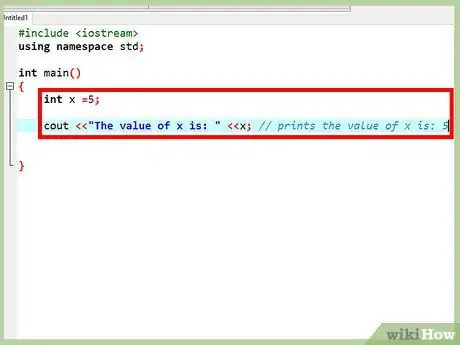
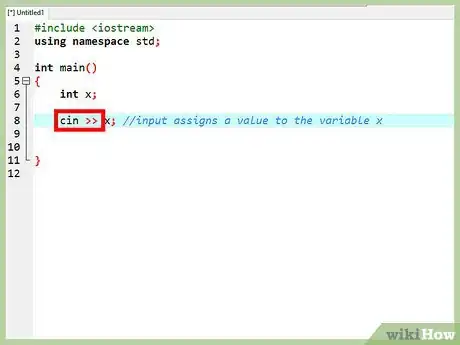
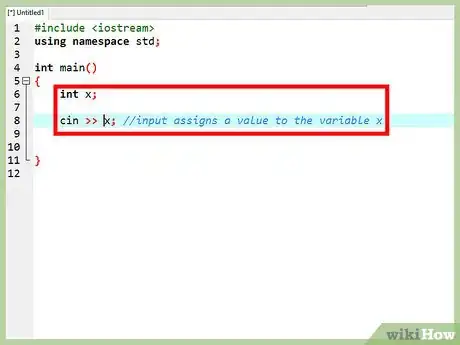
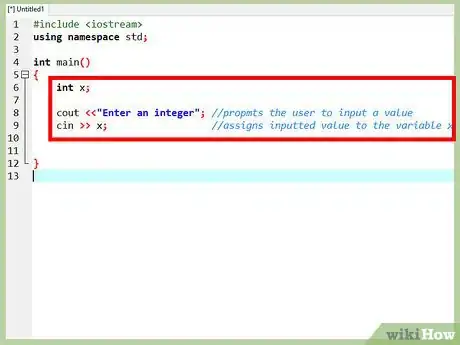
-Step-16-Version-3.webp)
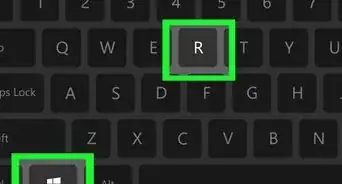
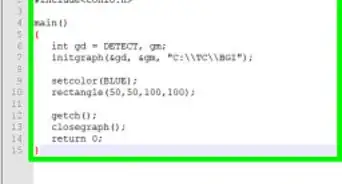
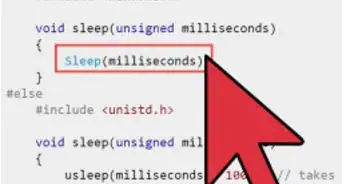
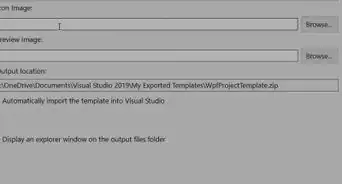
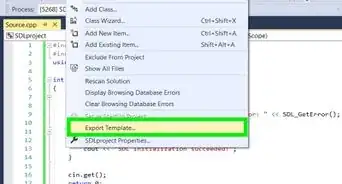
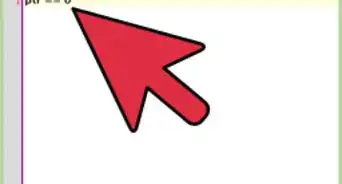
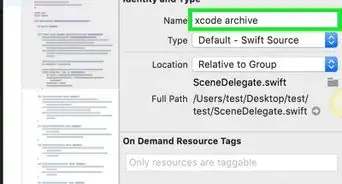
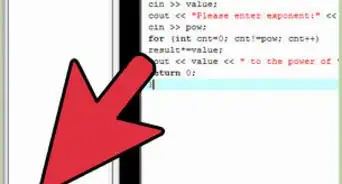








-Step-16-Version-3.webp)

